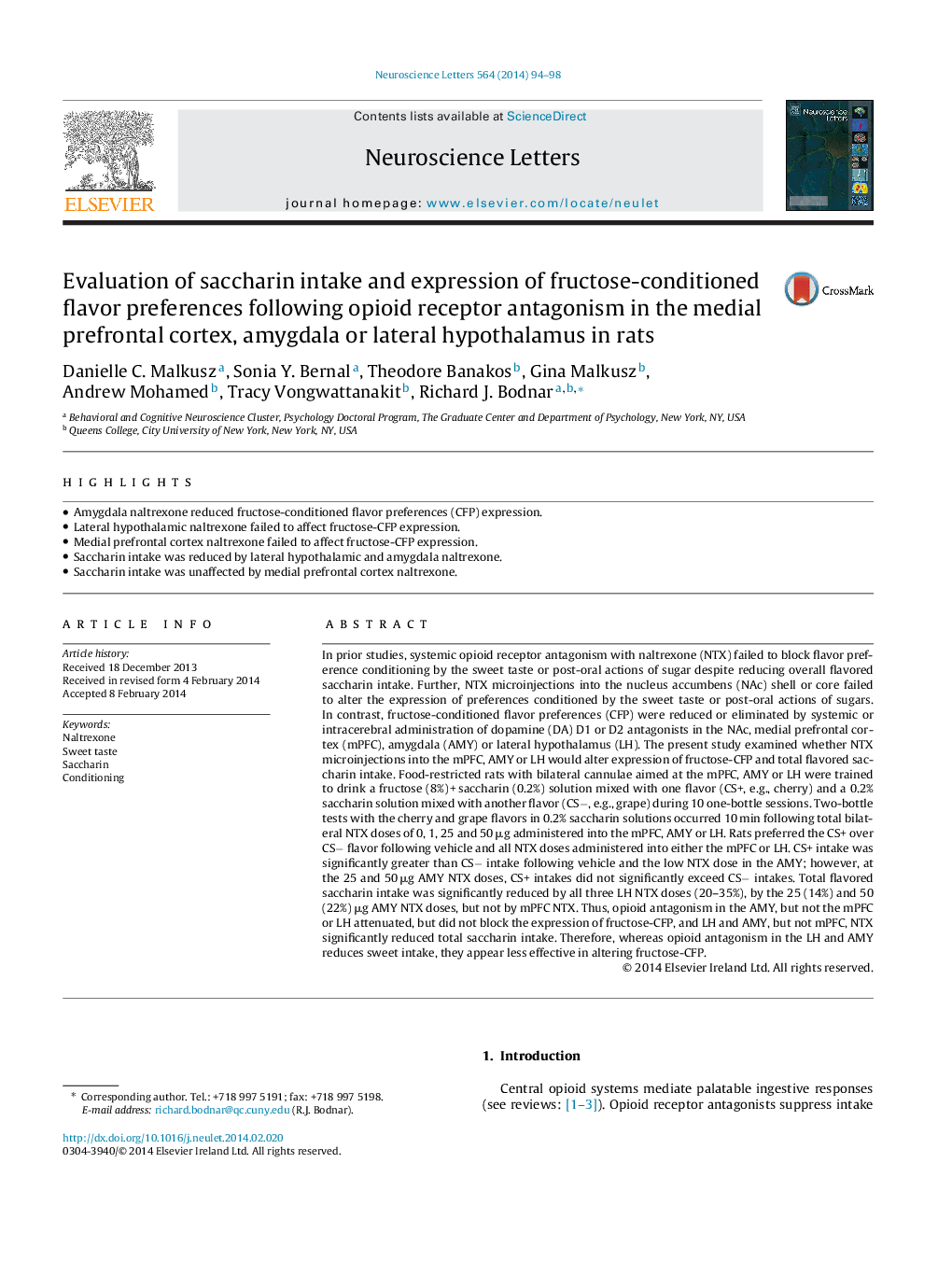| کد مقاله | کد نشریه | سال انتشار | مقاله انگلیسی | نسخه تمام متن |
|---|---|---|---|---|
| 6282254 | 1615135 | 2014 | 5 صفحه PDF | دانلود رایگان |
- Amygdala naltrexone reduced fructose-conditioned flavor preferences (CFP) expression.
- Lateral hypothalamic naltrexone failed to affect fructose-CFP expression.
- Medial prefrontal cortex naltrexone failed to affect fructose-CFP expression.
- Saccharin intake was reduced by lateral hypothalamic and amygdala naltrexone.
- Saccharin intake was unaffected by medial prefrontal cortex naltrexone.
In prior studies, systemic opioid receptor antagonism with naltrexone (NTX) failed to block flavor preference conditioning by the sweet taste or post-oral actions of sugar despite reducing overall flavored saccharin intake. Further, NTX microinjections into the nucleus accumbens (NAc) shell or core failed to alter the expression of preferences conditioned by the sweet taste or post-oral actions of sugars. In contrast, fructose-conditioned flavor preferences (CFP) were reduced or eliminated by systemic or intracerebral administration of dopamine (DA) D1 or D2 antagonists in the NAc, medial prefrontal cortex (mPFC), amygdala (AMY) or lateral hypothalamus (LH). The present study examined whether NTX microinjections into the mPFC, AMY or LH would alter expression of fructose-CFP and total flavored saccharin intake. Food-restricted rats with bilateral cannulae aimed at the mPFC, AMY or LH were trained to drink a fructose (8%) + saccharin (0.2%) solution mixed with one flavor (CS+, e.g., cherry) and a 0.2% saccharin solution mixed with another flavor (CSâ, e.g., grape) during 10 one-bottle sessions. Two-bottle tests with the cherry and grape flavors in 0.2% saccharin solutions occurred 10 min following total bilateral NTX doses of 0, 1, 25 and 50 μg administered into the mPFC, AMY or LH. Rats preferred the CS+ over CSâ flavor following vehicle and all NTX doses administered into either the mPFC or LH. CS+ intake was significantly greater than CSâ intake following vehicle and the low NTX dose in the AMY; however, at the 25 and 50 μg AMY NTX doses, CS+ intakes did not significantly exceed CSâ intakes. Total flavored saccharin intake was significantly reduced by all three LH NTX doses (20-35%), by the 25 (14%) and 50 (22%) μg AMY NTX doses, but not by mPFC NTX. Thus, opioid antagonism in the AMY, but not the mPFC or LH attenuated, but did not block the expression of fructose-CFP, and LH and AMY, but not mPFC, NTX significantly reduced total saccharin intake. Therefore, whereas opioid antagonism in the LH and AMY reduces sweet intake, they appear less effective in altering fructose-CFP.
Journal: Neuroscience Letters - Volume 564, 3 April 2014, Pages 94-98
